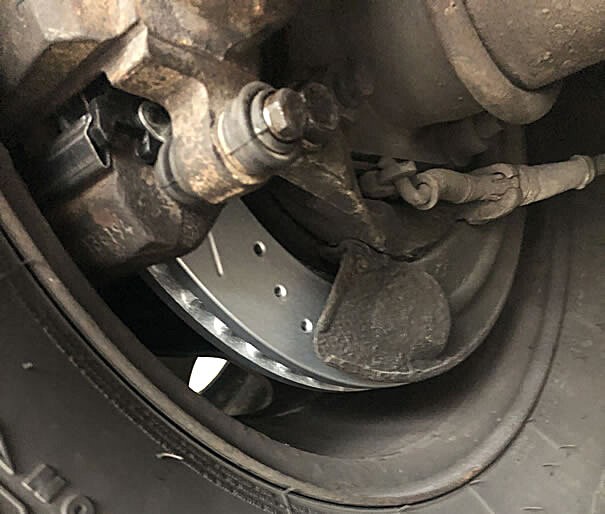Buying New Brake Rotors vs. Resurfacing of Old Discs
December 15, 2020 There are a few things to consider when it comes to servicing your aging brake rotors. Faulty discs may reduce your braking power and make your vehicle shake and vibrate while you are stopping. When this happens, you should inspect both front and rear brakes and find the root cause. If the rotors are at fault, you got the following repair options.
There are a few things to consider when it comes to servicing your aging brake rotors. Faulty discs may reduce your braking power and make your vehicle shake and vibrate while you are stopping. When this happens, you should inspect both front and rear brakes and find the root cause. If the rotors are at fault, you got the following repair options.
Cleaning of rotor friction surfaces
If the rotor is in visually good condition without major wear or gauging, you should first try cleaning its braking surfaces. The pad composite material can burn and leave an uneven deposit on friction surfaces of the rotor, and the variation in disc thickness will cause the vibration/pulsation during braking. In this case the rotor is not actually warped (deformed), and its friction surfaces can be cleaned using a fine sanding paper of 150~240 grit. This simple repair/maintenance can be done without any special equipment or tooling.
Resurfacing of old rotors on a lathe
If the wear/gauging is noticeable, it may be possible to resurface the rotor on a lathe by machining a thin layer from the friction faces on both sides. The rotor thickness should be measured to ensure that enough material is available for machining. There is a minimum required rotor thickness, called the discard thickness, and the rotor cannot be machined if it is worn beyond that value. Discard thickness is a heat related dimension beyond which the rotor must be replaced as it can no longer effectively dissipate the heat generated during stopping. Note that not all types of rotors can be resurfaced. In the case of drilled rotors, the thru holes on the friction surfaces increase the risk of damaging this rotor during turning. As such, not all shops would offer resurfacing of drilled and slotted performance rotors. Finally, the machining cost would range from $30 to $80 per rotor depending on its size and type.
Installing new rotors and pads
Warped or severely gauged rotors would have to be replaced along with a new set of pads, as the resurfacing is no longer possible. However, even if resurfacing of old rotors is an option, you should consider installing a new set of rotors as it may be quicker and more cost-effective. First of all, it is increasingly harder to find a shop with a brake lathe nowadays. Also, the thickness of the resurfaced rotor would be near its discard thickness, increasing the risk of rotor overheating and warping, and there would be no extended warranty on resurfaced discs. Finally, the cost of new warranted rotors is often comparable to the machining cost.


